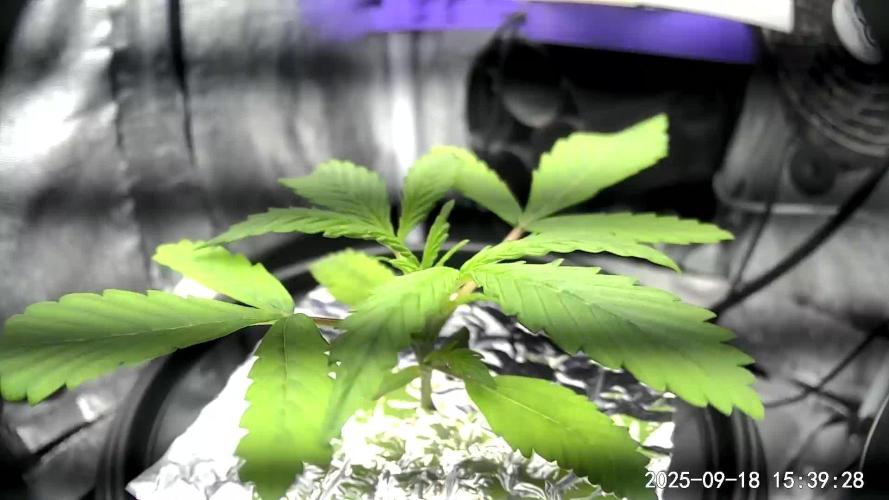By continuing to use the website or clicking Accept you consent to our cookies and personal data policy and confirm that you are at least 18 year old. For details please see Privacy Policy and Terms
Accept
Likes
Comments
Share


@Ultraviolet
Follow
Human Body
65% Oxygen (in all liquids and tissues, bones, and proteins)
18% Carbon (everywhere)
10% Hydrogen (in all liquids and tissues, bones, proteins
3% Nitrogen (in all liquids and tissues, proteins
1,5% Calcium (lungs, kidney, liver, thyroid, brain, muscles, heart, bones)
1% Phosphorus (urine, bones, DNA)
0,35% Potassium (enzymes)
0,25% Sulphur (proteins)
0,15% Sodium (in all liquids and tissues) (in terms of salt)
0,05% Magnesium (lungs, kidney, liver, thyroid, brain, muscles, heart)
The average adult male contains about 140 g of K(Potassium); the level varies with body weight and muscle mass. We ingest about 2.5 g per day of K from our food and excrete about the same amount. 0.0118 % of that is K40
The answer is that they were present when our earth was formed. Any radioactive material originally present at the formation of the earth would have decayed and disappeared if its half-life was short compared to the age of the earth. However, if its half-life were long, close to or greater than the age of the earth, then such materials would not have disappeared but are still with us today.
There are several radioelements in this category, such as the well-known elements uranium and thorium. Thorium (Th232) has a half-life of 14,000,000,000 years, uranium has two long-lived radioisotopes; U238 has a half-life of 4,500,000,000 years, and U235 has a half-life of 710,000,000 years. These give rise to the radium and thorium atoms found in all humans, acquired from the food we eat. That food, of course, obtained these materials from the soil in which it grew or on which it grazed.
Potassium is also in this category. There are actually three potassium isotopes: K39, a stable isotope, is the most abundant, at 93.26 % of the total; K41 is next in abundance at 6.73 % and is also a stable isotope. The potassium isotope of interest is a radioactive isotope, K40. It is present in all potassium at a very low concentration, 0.0118 %. It has a very long half-life, 1,260,000,000 years. When it decays 89 % of the events give rise to the emission of a beta ray with maximum energy of 1.33 MeV. The other 11 % of the decays produce a gamma-ray with an energy of 1.46 MeV
The forces required to forge thorium 232 can only be harnessed when traveling close to or at the speed of light, so essentially what I'm getting at is 0.0118% of every person alive is formed of the same element that was forged in the anvil of creation itself. We are all one & the same
German chemist Johann Wolfgang Dobereiner attempted to classify elements with similar properties into groups of three elements each. These groups were called ‘triads’. Dobereiner suggested that in these triads, the atomic mass of the element in the middle would be more or less equal to the mean of the atomic masses of the other two elements in the triad.
An example of such a triad would be one containing lithium, sodium, and potassium. The atomic mass of lithium 6.94 and that of potassium is 39.10. The element in the middle of this triad, sodium, has an atomic mass of 22.99 which is more or less equal to the mean of the atomic masses of lithium and potassium (which is 23.02). 9 controls the 6 and 3.
The Limitations of Dobereiner’s Triads are :
All the elements known at that time couldn’t be classified into triads.
Only four triads were mentioned – (Li,Na,K ), (Ca,Sr,Ba) , (Cl,Br,I) , (S,Se,Te).
2. Newland’s Octaves
English scientist John Newlands arranged the 56 known elements in increasing order of atomic mass in the year 1866. He observed a trend wherein every eighth element exhibited properties similar to the first.
Azomite contains 180ppm of thorium.
Your plant will thank you, you are welcome.
Most farmers do have not a proper understanding of what is Azomite and how to use it in gardening, especially if they practice organic farming. Continuous propagation and leaching effects of water deplete the essential minerals and micro-nutrients from the soils. Such soils remain weak, not able to support the production of fruits and vegetables. Azomite mineral contains micronutrients that supplement the soil. It also balances the minerals for growth and overall productivity. Constant use of this mineral rejuvenates your soil renewing its potency again. Azomite is a naturally mined mineral product that is ready to use. It’s a unique rock that comes from a mine in central Utah. Azomite requires no mixing or special preparation before use. It is derived from volcano ash that spewed out millions of years ago. It contains the widest range of minerals of all the rock dust in the world. Azomite provides plants with 70% essential elements. These elements include magnesium, calcium, potassium, and silicon for plant growth.
Facts About Azomite Fertilizer
It’s a natural mineral – 100% natural with no fillers or additives
Does not contain any harmful elements
Requires no special preparation before use
It’s odorless – very friendly to use
Does not restrict water penetration or aeration
Is easily broken down and absorbed into the soil
Does not burn plants.
READ ALL OF THIS, Magic is real:) Mag(net)ic has always been real.
Nuclear charge radii are sensitive probes of different aspects of the nucleon-nucleon interaction and the bulk properties of nuclear matter, providing a stringent test and challenge for nuclear theory. Experimental evidence suggested a new magic neutron number at N= 32 (refs. 1–3) in the calcium region, whereas the unexpectedly large increases in the charge radii4,5 open new questions about the evolution of nuclear size in neutron-rich systems. By combining the collinear resonance ionization spectroscopy method with β-decay detection, we were able to extend charge radii measurements of potassium isotopes beyond N= 32. Here we provide a charge radius measurement of 52K. It does not show a signature of magic behavior at N= 32 in potassium. The results are interpreted with two state-of-the-art nuclear theories. The coupled cluster theory reproduces the odd-even variations in charge radii but not the notable increase beyond N= 28. This rise is well captured by Fayans nuclear density functional theory, which, however, overestimates the odd-even staggering effect in charge radii. These findings highlight our limited understanding of the nuclear size of neutron-rich systems and expose problems that are present in some of the best current models of nuclear theory.
The charge radius is a fundamental property of the atomic nucleus. Although it globally scales with the nuclear mass as A1/3, the nuclear charge radius also exhibits appreciable isotopic variations that are the result of complex interactions between protons and neutrons. Indeed, charge radii reflect various nuclear structure phenomena such as halo structures6, shape staggering7, and shape coexistence8, pairing correlations9,10, neutron skins11, and the occurrence of nuclear magic numbers5,12,13. The term ‘magic number’ refers to the number of protons or neutrons corresponding to completely filled shells. In charge radii, a shell closure is observed as a sudden increase in the charge radius of the isotope just beyond magic shell closure, as seen, for example, at the well-known magic numbers N=28, 50, 82, and 126 (refs. 5,12–14).In the nuclear mass region near potassium, the isotopes with proton number Z≈20 and neutron number N=32 are proposed to be magic on the basis of an observed sudden decrease in their binding energy beyond N=32 (refs. 2,3) and the high excitation energy of the first excited state in 52Ca (ref. 1). Therefore, the experimentally observed a strong increase in the charge radii of calcium4 and potassium5
isotopes between N=28 and N=32, and in particular the large radius of 51K and 52Ca (both having 32 neutrons), have attracted substantial attention. One aim of the present study is therefore to shed light on several open questions in this region: how does the nuclear size of very neutron-rich nuclei evolve, and is there any evidence for the magicity of N=32 from nuclear size measurements? We furthermore provide new data to test several newly developed nuclear models, which aim to understand the evolution of nuclear charge radii of
exotic isotopes with large neutron-to-proton imbalances. So far, abinitio nuclear methods, allowing for systematically improvable calculations based on realistic Hamiltonians with nucleon-nucleon and three-nucleon potentials, have failed to explain the enhanced nuclear sizes beyond N=28 in the calcium isotopes4,15. Meanwhile, nuclear density functional theory (DFT) using Fayans functionals has been successful in predicting the increase in the charge radii of isotopes in the proton-magic calcium chain10, as well as the kinks in proton-magic tin and lead12. All these theoretical approaches have, until now, been predominantly used to study the charge radii of even-Z isotopes. Here they will be applied to the odd-Z potassium isotopes (Z=19).
https://www.nature.com/articles/s41567-020-01136-5
Likes
21
Share


@GrowBro503
Follow
Apparently you can give your plant nitrogen burn with an organic fish emulsion. Live and you learn LOL
Likes
15
Share


@Waveform
Follow
Day 60 and a new week, with lady #2 starting to show her age by getting some more yellowish fan leaves. Sugar leaves on both started to show a very lovely, deep violet color. By breeder information they should be ready in 60–63 days. I guess it will be a few more in my case.
Lady #1 is foxtailing a bit. Summer grow, definitely, and it was over 30 °C outside most of the daytimes, so I couldn’t avoid peak temperatures of more than 31 °C fully. Like every indoor grower – no restriction to this kind of plant only – I like to see self-grown green become big and bushy, but I guess with a 1,60 m tent it‘s better to stick with shorter specimen.
Even some fan leaves are getting into their autumn dress now, and wow, I like their style! Pistils are still white to more than 50%, so ne reason to check for harvest proximity or to feed them pure water only.
Day 62: With their cola foxtailing, tallest bud is now at 91 cm. Color is gaining saturation. A bit more intense leaf curl on very few of the uppermost leaves; nothing to worry about at this stage. Think I can do a microscope tour soon, even if I know it’s too early. ;)
Processing
Likes
21
Share


@YourStonedBuddy
Follow
Very hardy strain, put her through alot in the beginning and she did really well! Started throwing alot of nanners so i had to pull her slightly earlier than i wanted to, even though i was 13 weeks in flowering.
Likes
38
Share


@Green_Mountains
Follow
A lot going on this week!! Feeding 3 quarts every Sunday and Wednesday at this point. I did a light defoliation on Monday and did a more thorough defoliation on Friday! I opened up a lot of bud sights and it shows in the pics from late in the week!!
I just turned the fan and carbon filter on. Temps are currently holding at 73-74F and the humidity is between 43-45%. I'm very happy with that!
I hope to keep them both happy!!
Enjoy!
Likes
5
Share


@GroloCup
Follow
Solid week, she's starting to hit her first growth spurt so it won't be long before she starts to spread out. I'm going to keep her trained a little bit and see what she can take. MegaCrop is the fuel for this Groloponix run and I'll keep her pH at 5.7. Thanks again to Brother Geoff for naming this one olin my honor, hopefully I can grow it to the maximum!
Likes
3
Share


@GorillaTia
Follow
Piante spettacolari, attraenti , la resina abbonda e l’odore è forte e molto buono
Tra poche ore si raccoglie , radici pulite con risciacquo di 2 settimane 😋😜
Processing
Likes
66
Share


@DrGreenThumb95
Follow
What a week,
So I did a run off test end of last week and they was really high, but I would like to address the DNA Mills cork as I am using this in just one pot (A) to try it out I used 3/4 (B) to my normal coco in another pot 50:50 (C) in another at a 1/4 (D) then when just my normal coco mix ( E) and I havent seen much difference other then the retention of water... UNTILL NOW. So evaluating all my reading I have from run off this is how it WAS sitting running water with an EC 0.7 Ms/cm
A - 2.4 Ms/cm
B - 2.3 Ms/cm
C - 2.0 Ms/cm
D - 1.9 Ms/cm
E - 1.5 Ms/cm
So my conclusion is that I dont like the cork maybe I'm using it wrong somehow I dont know but in my experience, it seems to be grabbing hold of all the salts and not letting go, so this week I ran litres and litres of water through them to bring them down I can only get A down to 1.4 Ms/cm and am struggling to get it any further down does anyone have any suggestions.
As for the deficiency I was supposed to I produce the PK booster beginning of this week and couldn't with the run off being so high, well that's what I'm hoping anyways 😂.
Plant A doesn't seem to be swelling like the rest (front left in pictures) I'm hoping this is down to genetics if anyone else has any thought I'd love to hear them.
Thanks for dropping in and reading,
Happy Growing! 👊👍
Likes
9
Share


@burnercorona
Follow
Another week the little lady keeps plugging away. Trichs are just about all cloudy. Harvest time could be this week.
Likes
248
Share


@mcflow
Follow
Yielded way more than i thought! Great strain, i planted the seedlings in their final pot right away and it worked like a charm! Had a little problem with gnats but the nematodes i used made that problem go away really fast. The smell of the buds are awsome, im looking forward to smoking some
Likes
18
Share


@RFarm21
Follow
9 março - 15 março
12 março - feeding
16 março - cheese #1 feeding:
Bio bloom 0.5ml ; top max 0.5ml ; bio heaven 1.5ml; sílica 0.1ml; bio grow 0.7ml
16 março - cheese #2 feeding:
Bio bloom 0.5ml ; top max 0.5ml ; bio heaven 1ml; bio grow 0.5ml
Likes
27
Share


@ClydeGrows
Follow
Bonus material- my cannabutter pics. No smoke report for a while but I can give you an edibles report in a few hours 😂
Plant #1 suffered gravely and thus was harvested early, dried, and turned into beaaautiful butter/edibles hehe. The rest of it is box drying and I'll be doing the same with that. The top of the plant (first harvest of sorts, after bud rot discovered) was 49g dry, not inc ofc what was binned. I'll let you know the dry weight of the rest but no point giving you a smoke report. She was cut early and suffered a looooot
The purple lemonade began as the underdog and quickly took over as my #1 babe. It was far more resilient to environmental conditions and changes- and let's not forget that they went through a hurricane with me and power out for a few days! I don't find her strong on the nose at all despite how big some of her buds are, and how frosty. Very piney, and that dominates everything else. Very excited to see what terps come out more in the cure though- I hear great things about this strain. She was cut today and is hanging in a dark closet with small fan, RH 65% and temp 22c. I did not take a wet weight, but she's heavy. Super looking forward to smoking this one, after a few more weeks of TLC... Sigh. Always we try to wait haha. I will report back when I have more for you all. Thanks to everyone that answered my questions and supported me through my first grow. I've definitely got the bug now and there'll be no stopping me haha
Will be back with smoke report and dry weights laterrr
🇨🇦
---
Nov 12 - Plant dried for 6 days. It is a lot airier than I thought it was going to be, so most of it ended up as shake for edibles or something. I ended up with 38g of big bud, 33 of smaller, and over 40g of larf and shake. Even the big buds are airy though, not dense at all. A little disappointing for sure, but I made a lot of mistakes so it isn't a surprise. It is now in jars with humidity packs and I'll report back in a couple of weeks or so with a smoke report :)
Likes
68
Share


@715creeks
Follow
Really starting to branch out and fill in nicely, loads of white hairs appearing. Looking good :)
Processing
Likes
2
Share


@GanjaFarmar
Follow
Day 50 from seed and its a nice looking branchy plant. Barney farm allways impresses me with their quality. So far its growing the slowest in terms of budding but looks like a good yielder.
Ive dosed up the biobizz nutrients like its said on the charts.
Lights are still 20/4
One love!































